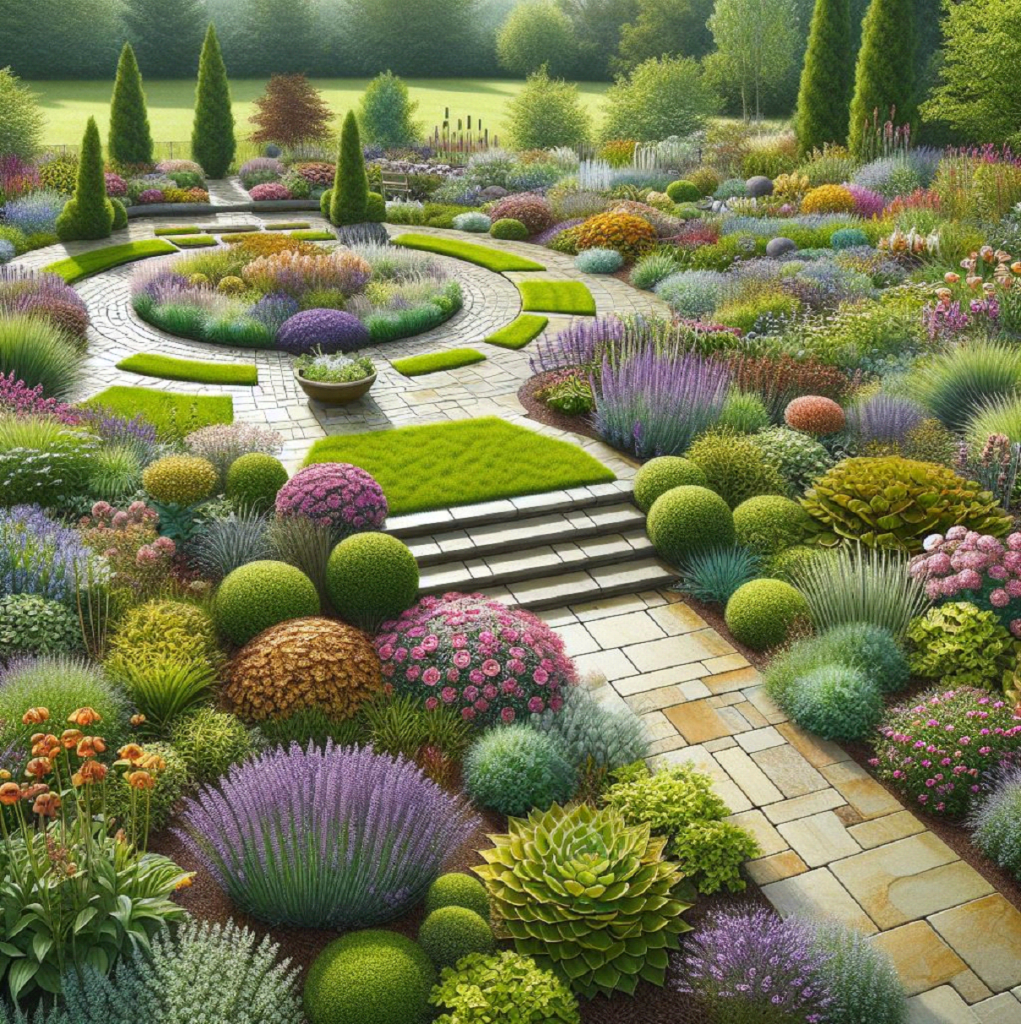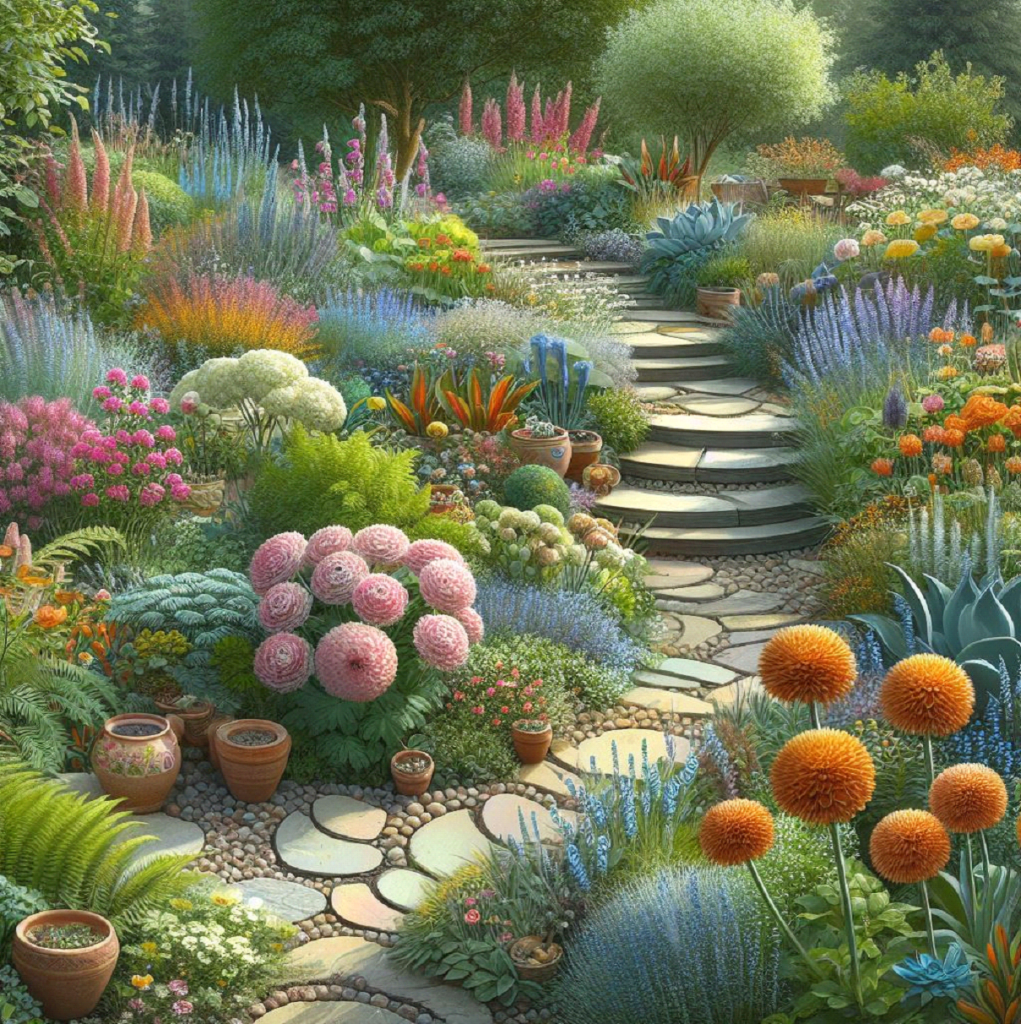Low-maintenance perennial garden design schemes
Those gardeners who seek a non-stop vibrant and conspicuous garden in the outdoor space while overburdened with low-maintenance landscaping experiments will find these low-maintenance perennial garden beds as the best alternative. These temptingly handsome gardens pleasure watching how their colors change during all seasons, thus minimizing the time taken to care for the garden. Thanks to this thoughtful layout, you can enjoy your garden and not worry about how much time you have to spend trying to keep it in good shape!

The author talks in detail about low-maintenance perennial garden design schemes.
By selecting vegetal plants adequately, the low-maintenance perennial garden design schemes integrate perennial plants that require a minimum of care. You can achieve this simply by selecting the varieties that are best adapted to the harsh conditions by being hardy, drought-resistant, and disease-resistant. This will result in a blend that will reduce your need to water, weed, and prune by much more than high-maintenance gardens that demand constant attention.
The attraction of the low-maintenance perennial garden design templates is due to their capacity to create themselves through time and, in this way, form a self-sustaining ecosystem that inhibits weed competition, retains water, and promotes insects and pollinators. If you raise the gardens successfully in the first year, then with good planning and incorporation, these gardens can remain productive year after year, without you needing to exert much effort.
The fundamental rules of the xeriscape of the perennial garden scheme are as follows:
- Plant Selection: The sustaining rhythm of the colors will be a result of the selection of plants. Select the kind withstood, withstands rainfall, and repels common pests and diseases. In many cases, the best option is a native plant since it has been acclimatized to our soil types and climate.
- Grouping and Layering: To create a nice garden that also has efficiency in the use of water and sunlight, try planting plants that have similar water and sunlight requirements in a group. Furthermore, you can place plants with different growing heights and textures upon one another so that you have depth all year round.
- Mulching: An organic mulch layer of the prescribed size is a critical “standard” element of low– maintenance perennial garden design plots. Mulch does many good things for the soil. It helps soil retain moisture, control weed growth, and shield plant roots. That saves us from the trouble of watering and weeding as often.
- Efficient Irrigation: Concentrate on water-efficient irrigation methodologies, for instance, drip irrigation or soaker hoses, so that you can give the plants the amount of water they require without wasting any in excess. These systems cut the evaporation at its minimum level and focus on applying the water effectively, moving it where it’s most needed, which reduces the total water used for the purpose.
- Strategic Placement: Notice the nature of the microclimate within your garden when choosing which plants to grow and where to plant them. Place sun-loving plants in locations that receive maximum sunlight, whereas shade-tolerant varieties do well in areas with partial shade. This climactic factor greatly relieves the burden of frequent transplanting or additional tending.
The principles of low-maintenance perennial garden design include a few thoughtful design elements.
- Structural Plantings: Alongside low-maintenance perennials, you could also have evergreen shrubs, ornamental grasses, and architectural perennials that keep giving low-maintenance interest throughout the whole year. These feature plants will define borders, making for a beautiful garden while taking up less than 2 hours of maintenance in a week.
- Groundcovers: Give preference to low-maintenance lawns that are shaded or low-sloped, or less-green areas that are planted with low-growing and dense groundcover plants. These thick, encroaching plants become aggressive by the end of the season as they heap up weed suppression mowing, and penetrating the root system.
- Repetition and drifts: Use the same variety of plants on the different parts of the garden, the meadow, and the stream area to make your garden boundaries more uniform. With this approach, you require the ability to bring about the themes of harmony and flow and to make the garden look nothing but well-planned and designed.
- Focal Points: Selectively install attractive objects, like sculptures, fountains, and representative plants, so that you highlight key spots within the low-maintenance design of your perennial garden guiding principles. These elements bring a diversity of views and directions for the visitors to detect, thus conveying a great feeling of depth and dimension.
- Pathways and Seating Areas: Consider pathways and resting spots on your layout so your garden can be explored in another interesting way besides walking. Properly laid paths and seating areas not only improve the overall appearance by providing appropriate access but also make it easier to accomplish minimal upkeep tasks.
Consider a design that is easier to maintain to see you through the years.
Although low-input and low-maintenance perennial garden design schemes require less effort than well-set-up traditional gardens, a certain level of maintenance is still indispensable to the longevity of the garden. Here are a few essential tasks:
- Seasonal Cleanup: Additionally, in the autumn or early spring, remove broken or withered branches to keep the property neat and to prevent further problems with diseases or pests.
- Dividing and Transplanting: Conservation of perennial plants demands they be divided and moved over a particular period to encourage their strong roots and to prevent overgrown areas from dominating. This task, as a rule, can be done at about three to five-year intervals when the plant species are suitable for doing so.
- Supplemental Watering: During lengthy or extremely hot seasons, consider adding supplemental water to your low-maintenance perennial garden farm design plan for plants to suffer minimal stress and grow well.
- Occasional Pruning: When flowering plants need to make some light pruning to avoid getting dead headers for continued blooming or to keep their desired size and shape, there may be other reasons.
Conclusions about Low-maintenance perennial garden design schemes
A pragmatic and exciting solution for gardeners is a tolerance for low-care perennial garden design. Through judicious use of only the plants or combinations of plants that can thrive well without much interference, you could create a fantastic patio or a wide outdoor space that would require less of your time and effort than the traditional high-maintenance gardens. A well-crafted, low-maintenance perennial garden will be successful with the right design principles and regular maintenance strategies in place. It will reward you year after year by organizing a beautiful and serene view without you rolling up your sleeves at every small awry.

FAQs about Low-maintenance perennial garden design schemes
To which part of the land should I give priority to having a low input schedule for perennial gardens?
Building soil fertility with compost or other organic matter through replenishment before planting is fundamental. Hence, runoff water is drained with improved drainage, the quality of the nutrients is enhanced, and soil moisture is retained. This, in turn, minimizes required maintenance. Besides that, it is worth setting up raised beds to enhance the aggregate quality of your soil.
Can I have annuals or perennials in a low-maintenance garden without going much into maintenance?
Yes, you can certainly have annuals to add the depth and vibrancy that perennials do from season to season. Remember that the annuals that are used will have to be replaced at the end of every growing season.
Αφήστε μια απάντηση